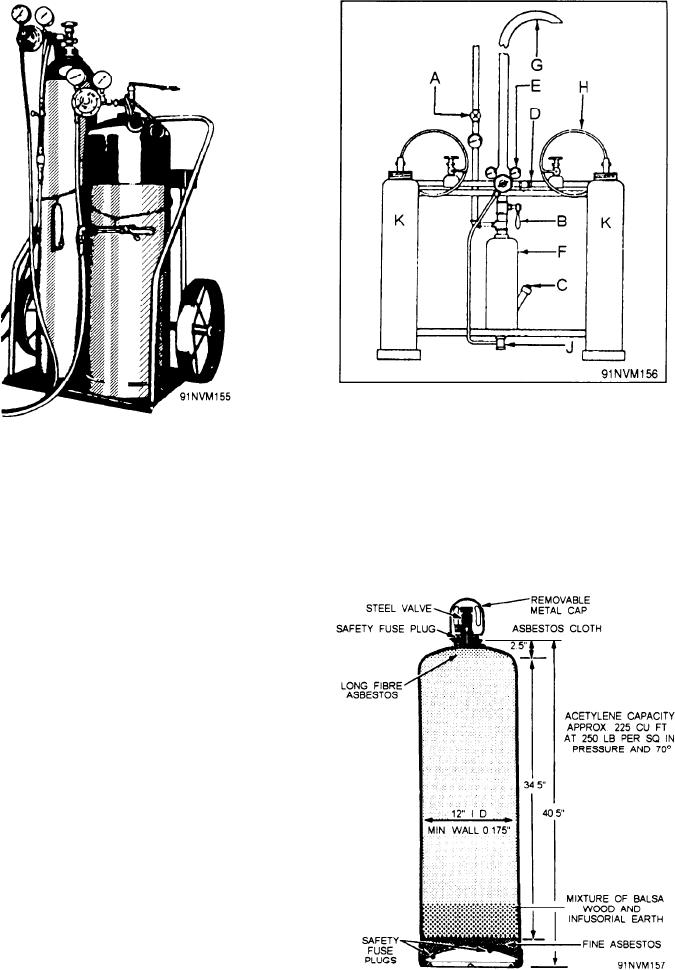
F. Flash arrester chamber
A.
Line valve
G. Escape pipe
B.
Release valve
C.
Filler plug
H. Cylinder connection pipe
Figure 8-1.--A portable oxyacetylene outfit.
D.
Header pipe
J. Check valve and drain plug
K. Acetylene cylinders
E.
Regulator
the open spaces in the cylinder and thus reduce the
Figure 8-2.--Stationary acetylene cylinder bank.
danger of explosion. At approximately 29 psi (pounds
per square inch), pure acetylene can be exploded by
nothing more than a slight shock; dissolved in acetone,
however, and stored in cylinders that are filled with
porous material, acetylene can be compressed safely
into cylinders at pressures up to 250 psi. An acetylene
cylinder is shown in figure 8-3. The acetylene cylinder
must be in the vertical position a minimum of 2 hours
before use to allow the porous filler material to settle
and to prevent it from being drawn into the hose,
gauges, and torch.
MAPP GAS
MAPP (methylacetylene-propadiene) gas is an all-
purpose industrial fuel that has the high flame tempera-
ture of acetylene and the handling characteristics of
propane. Being a liquid, MAPP gas is obtained by the
pound rather than by the cubic foot, as with acetylene.
One 70-pound (31.5-kg) cylinder of MAPP gas will do
the work of more than 6 1/2, 225-cubic foot acetylene
cylinders. This is a ratio of 70 pounds of MAPP gas to
1,500 cubic feet of acetylene.
The total weight for the 70-pound (31.5-kg)
MAPP cylinder, which is the same physical size as a
Figure 8-3.--Acetylene cylinder.
8-2

